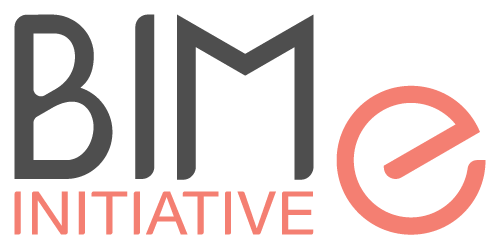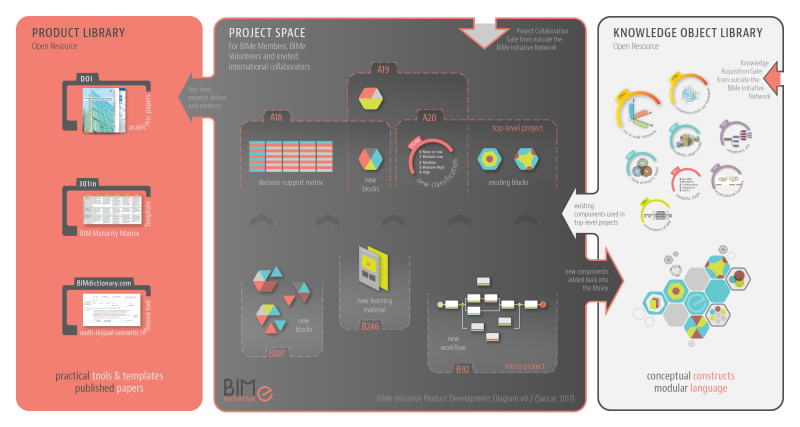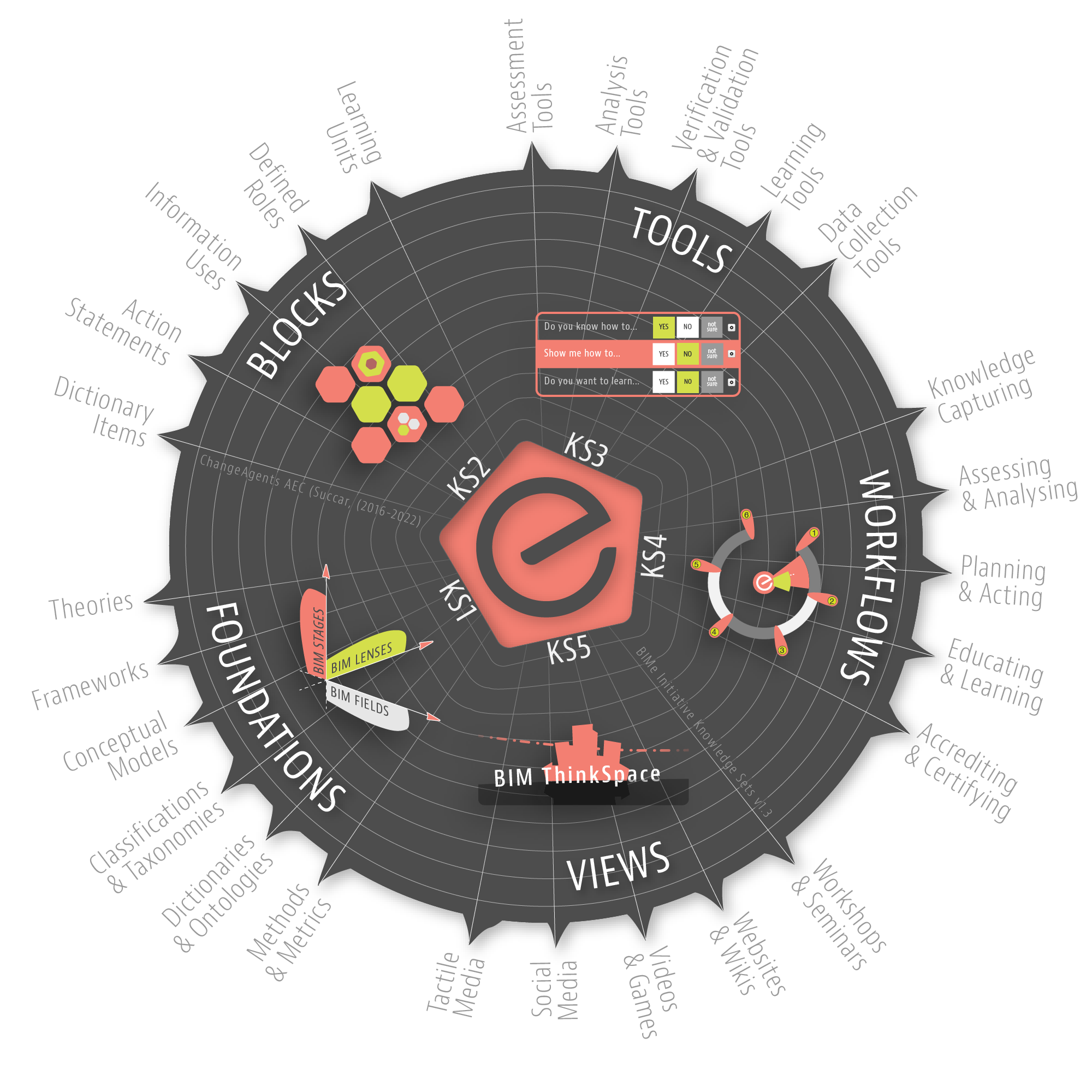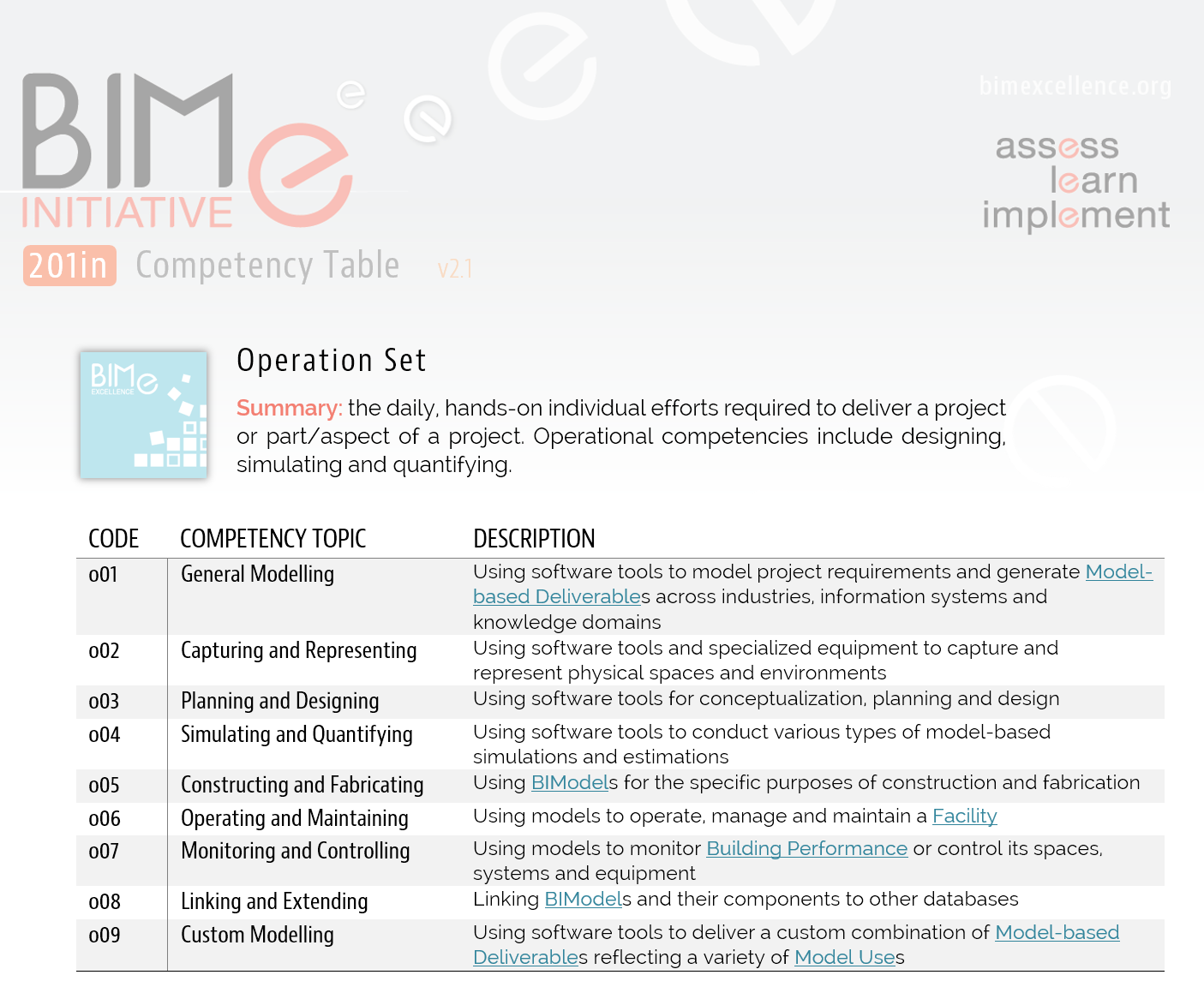Published on March 18, 2017 | Last Updated on September 13, 2025
The BIMe Initiative has just launched! As of today, BIM ThinkSpace, BIM Framework blog and BIM Framework YouTube Channel are part of the BIMe Initiative. As of today, all publications, presentations, and workshops derived from the BIM Framework will follow the initiative’s General Principles and use its Knowledge Structures. As of today, the online BIM Dictionary – the first project of the initiative – supports right-to-left script and 7 languages out of 20 planned in 2017. As of today, all well-informed practitioners, domain researchers, and forward-looking organisations are invited to join the BIMe Initiative Network and contribute to improving the industry’s digital performance. So what is the BIMe Initiative?
Introduction
The BIMe Initiative is based on the BIM Excellence [1] approach and represents a community-based effort to improve the performance of the construction industry through high-impact research and open knowledge sharing.
In essence, the BIMe Initiative complements and – where difficult to complement – provides an alternative to top-down, authority-led, and prescriptive BIM diffusion policies. Supported by clear knowledge structures, a network of international subject matter experts, and an expanding modular language, the BIMe Initiative delivers an innovative, coherent and a timely response to the opportunities and challenges brought-forward by BIM adoption.
The BIMe Initiative delivers solutions of practical benefit to facility owners, designers, builders and operators. These solutions include:
- Developing free-to-use tools and templates to simplify decision-making processes and automate repetitive procedures.
- Generating reliable industry-wide competency benchmarks and identifying competency gaps to be addressed through continuous performance improvement activities;
- Developing competency-based learning methods, tools and materials applicable across tertiary education, vocational training, self-learning and professional development;
- Developing a modular language for digital transformation across the Construction Industry. The language will simplify complex topics and weave multiple research efforts into one consistent whole; and
- Facilitating the exchange of knowledge and experience between academia and industry.
Why is the BIMe Initiative needed?
There are many government-funded committees, commercially–driven corporations and heroic individuals/groups working towards improving the Construction Industry’s BIM adoption and its overall digital performance. While many of these varied efforts provide great strategies, protocols and digital solutions, they are mostly disconnected from each other, restricted because of copyright clauses, and specific to the markets they originate from.
Also, there are only a few truly-international organisations operating in this space but they tend to mostly focus on developing schemas and prescriptive standards for industry to comply with.
The BIMe Initiative takes a different yet complementary approach to these international efforts by adopting four General Principles:
(A) Commitment to Openness
All BIMe Initiative guides and tools will be released through open channels under a Creative Commons license allowing free use by individuals and organisations on their own projects (service providers require a license).
(B) Grown around a Knowledge Structure
The BIMe Initiative is built upon a clear structure for harvesting and organising knowledge. This structure allows the modular development of highly-interconnected guides and tools.
(C) Peer-sourced and Peer-tested
The BIMe Initiative connects international subject matter experts – from academia and industry – through a high-intensity R&D network. Through this network, the best solutions are identified, incubated, tested and released.
(D) Open Innovation across boundaries
The BIMe Initiative provides a knowledge tool-kit for anyone to use, customise, translate and continuously improve. Through Open Innovation, new solutions are collaboratively developed and shared across disciplines, industries and markets.
These General Principles are available in many languages and are further presented as an online Excellence Manifesto for all BIMe Initiative supporters to sign.
BIMe Initiative Projects
BIMe Initiative solution are delivered through different types of projects, each aiming to deliver a software application or a published guide of direct practical benefit to individuals, organisations and project teams. BIMe Initiative Projects also aim to deliver conceptual models and learning resources that can be used by researchers, educators and policy makers to conduct investigations, educate industry stakeholders and develop research-based policies.
The BIM Dictionary is an example of such an online learning resource developed through a top-level [2] project. Other examples of BIMe Initiative Projects include the Macro BIM Policy Guide project, the International BIM Competency Benchmarking project, and Integrated Information Platform project (refer to the online Projects List).
Fig.1. BIMe Initiative Product Development Diagram
For more information, please refer to 103in BIMe Initiative Projects.
BIMe Initiative Network
To deliver these projects, the BIMe Initiative relies on a network of individuals – BIMe Members and BIMe Volunteers – who are willing to:
- Learn and adopt the BIMe Knowledge Structures so all work generated is interconnected and form a single body of knowledge;
- Collaborate constructively with other members and volunteers; and
- Openly and freely share their knowledge with the wider community.
All subject matter experts can support the BIMe Initiative through sharing its deliverables, participate as BIMe Volunteers, or formally apply to become Active or Core Members.
For more information, please refer to 104in BIMe Initiative Network.
BIMe Initiative Knowledge Structures
To actively participate in the BIMe Initiative, it is important to adopt the BIMe Initiative Knowledge Structures. This adoption is important to ensure consistency of efforts and continuity of effort towards generating practical solutions and a coherent body of knowledge. These structures are represented as five complementary Knowledge Sets:
- KS1 Knowledge Foundations representing all the research underlying the BIMe Initiative;
- KS2 Knowledge Blocks representing the modular language used by the BIMe Initiative to define inputs, processes and outputs;
- KS3 Knowledge Tools representing the tools/templates used to conduct knowledge acquisition, engineering and sharing;
- KS4 Knowledge Workflows representing all repeatable procedures for knowledge acquisition and service delivery; and
- KS5 Knowledge Views identifying the varied ways to represent and communicate BIMe Initiative activities and deliverables.
Fig.2. BIMe Initiative Knowledge Sets Model
For more information, please refer to 102in BIMe Initiative Knowledge Structures.
BIMe Initiative Publications
BIMe Initiative projects generate many components of potential use by practitioners and academics. These components – e.g. frameworks, templates and lists – are shared, first, as peer-reviewed studies on BIMexcellence.org and, second, through high-calibre peer-reviewed journals and conference papers.
This early sharing is intended to benefit the wider community and to test/improve the components through application in different markets.
Fig.3. 201in Competency Table (screen capture)
For sample publications, please refer to BIMexellence.org/publications/.
BIMe Initiative Sponsorship
The BIMe Initiative aims to deliver open solutions that can be freely used by practitioners and academics. Developing these solutions relies mostly on the knowledge contributions of BIMe Initiative Members and Volunteers. It also relies on the financial and in-kind support provided by ChangeAgents AEC which covers its basic operating costs to keep it independent and ad-free. However, to expand the activities of the BIMe Initiative and undertake more ambitious knowledge-sharing projects (e.g. benchmarking the competency across whole markets), it is important to attract the financial and in-kind support of corporate and institutional sponsors.
In return for their contributions, sponsors receive public-recognition, and early-access to data, tools and project discussions.
For more information, please refer to 901in BIMe Initiative Sponsorship.
Ending thoughts
The BIMe Initiative is a community-based effort committed to improving the digital performance of the Construction Industry through high-quality research, practical-tool development, and open knowledge-sharing. This commitment is encoded in the General Principles and the Excellence Manifesto that you’re invited to sign today.
The BIMe Initiative is driven by informed contributors from across the world, each with their own specialty and world-improving mindset. We, the initial group of Core Members, invite you (yes, you) to join us as an active volunteer, signed-up member or recognised sponsor!
We will soon publish additional resources, so make sure you join the discussion on Twitter, LinkedIn or ResearchGate. You can also sign-up to receive the occasional BIMe Initiative Newsletter [3].
The BIMe Initiative community is active, please join us!
[1] BIM Excellence (BIMe) is a unique research-based approach to digital innovation in the construction industry. It offers an integrated methodology and a modular language for performance assessment, information management, learning and process optimisation. BIM Excellence is originally based on Dr. Bilal Succar’s personal research starting in 2007 and mostly published as part of his PhD in 2013. Since then, the research has expanded significantly and now invites others to build upon it to develop their own tools and templates.
[2] Top-level projects deliver end-products (guides or software tools) and may include a number of micro projects to deliver interim components (e.g. metrics and workflows) used within end-products.
[3] Please note to BIM ThinkSpace and the BIM Framework subscribers are automatically added to newsletter distribution list.
Cite as: BIMe Initiative (2025), 'The BIMe Initiative', https://bimexcellence.org/thinkspace/bime-initiative/. First published 18 March 2017. Viewed 31 December 2025





Well researched article with great ideas in construction industry.
Well researched article with great ideas in construction industry.
Hi Dr.Succar,
I am one of your students in MSc IPD at HKU and now working with MES in HK with Miranda. Now I am working a project regarding relationship between the BIM macro adoption and culture. I found the results shown on this paper and the results in paper titled, Macro BIM adoptoin: Comparative market analysis are quite relevant.
Just ask whether you could share more about the data for further analysis.
Also, grateful if we can discuss this with you in coming mid-Apr 2018 in HK.
Thanks
Best,
Alexander
Hi Dr.Succar,
I am one of your students in MSc IPD at HKU and now working with MES in HK with Miranda. Now I am working a project regarding relationship between the BIM macro adoption and culture. I found the results shown on this paper and the results in paper titled, Macro BIM adoptoin: Comparative market analysis are quite relevant.
Just ask whether you could share more about the data for further analysis.
Also, grateful if we can discuss this with you in coming mid-Apr 2018 in HK.
Thanks
Best,
Alexander
Hello Alexander,
Thank you for your message.
The results from the journal paper are from 2015 and do not reflect the current situation in the 20 countries analysed. Macro adoption research is a collation of snapshots that need to be repeated every couple of years, so they reveal the degree of improvement (or lack of) in a market, and to allow a comparison between markets in areas where comparison is possible/useful.
Starting late 2017, we started collecting a more detailed set of data from a smaller number of countries (please have a look here: http://bimexcellence.org/projects/macro-adoption/). We are hopeful that the new set will include Hong Kong, but we are still negotiating with research partners there. If you’d like to learn more or to assist us with this, please email me at bsuccar [at] changeagents [dot] com [dot] au.
Looking forward to meeting you in HK next month!
Bilal
Hello Alexander,
Thank you for your message.
The results from the journal paper are from 2015 and do not reflect the current situation in the 20 countries analysed. Macro adoption research is a collation of snapshots that need to be repeated every couple of years, so they reveal the degree of improvement (or lack of) in a market, and to allow a comparison between markets in areas where comparison is possible/useful.
Starting late 2017, we started collecting a more detailed set of data from a smaller number of countries (please have a look here: http://bimexcellence.org/projects/macro-adoption/). We are hopeful that the new set will include Hong Kong, but we are still negotiating with research partners there. If you’d like to learn more or to assist us with this, please email me at bsuccar [at] changeagents [dot] com [dot] au.
Looking forward to meeting you in HK next month!
Bilal
Dear Dr. Succar,
It is nice to hear that a new and more detailed macro adoption project is now undergoing.
I would email to you for details of this.
Thanks
Best,
Alexander
Dear Dr. Succar,
It is nice to hear that a new and more detailed macro adoption project is now undergoing.
I would email to you for details of this.
Thanks
Best,
Alexander